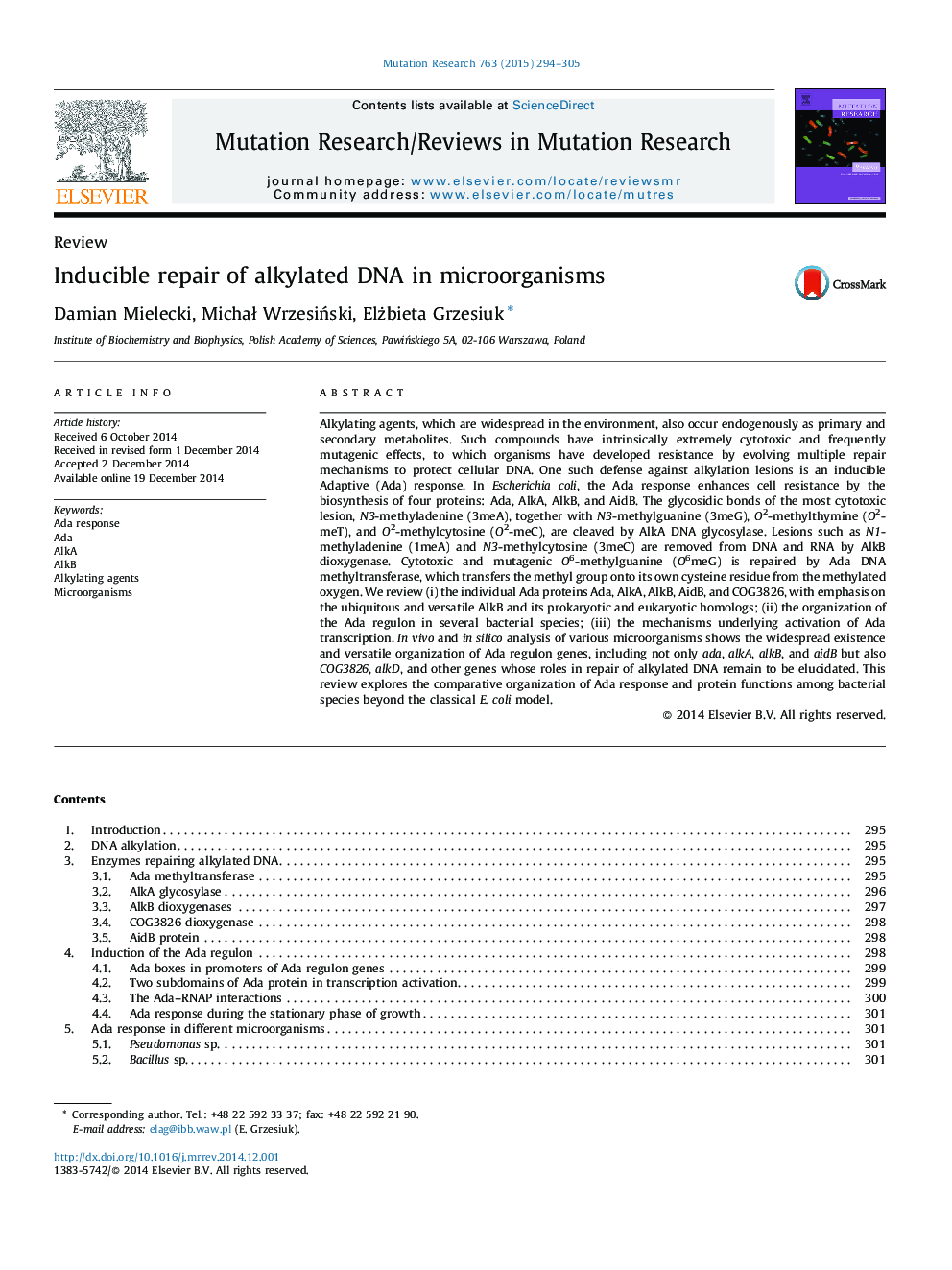| Article ID | Journal | Published Year | Pages | File Type |
|---|---|---|---|---|
| 2149611 | Mutation Research/Reviews in Mutation Research | 2015 | 12 Pages |
Alkylating agents, which are widespread in the environment, also occur endogenously as primary and secondary metabolites. Such compounds have intrinsically extremely cytotoxic and frequently mutagenic effects, to which organisms have developed resistance by evolving multiple repair mechanisms to protect cellular DNA. One such defense against alkylation lesions is an inducible Adaptive (Ada) response. In Escherichia coli, the Ada response enhances cell resistance by the biosynthesis of four proteins: Ada, AlkA, AlkB, and AidB. The glycosidic bonds of the most cytotoxic lesion, N3-methyladenine (3meA), together with N3-methylguanine (3meG), O2-methylthymine (O2-meT), and O2-methylcytosine (O2-meC), are cleaved by AlkA DNA glycosylase. Lesions such as N1-methyladenine (1meA) and N3-methylcytosine (3meC) are removed from DNA and RNA by AlkB dioxygenase. Cytotoxic and mutagenic O6-methylguanine (O6meG) is repaired by Ada DNA methyltransferase, which transfers the methyl group onto its own cysteine residue from the methylated oxygen. We review (i) the individual Ada proteins Ada, AlkA, AlkB, AidB, and COG3826, with emphasis on the ubiquitous and versatile AlkB and its prokaryotic and eukaryotic homologs; (ii) the organization of the Ada regulon in several bacterial species; (iii) the mechanisms underlying activation of Ada transcription. In vivo and in silico analysis of various microorganisms shows the widespread existence and versatile organization of Ada regulon genes, including not only ada, alkA, alkB, and aidB but also COG3826, alkD, and other genes whose roles in repair of alkylated DNA remain to be elucidated. This review explores the comparative organization of Ada response and protein functions among bacterial species beyond the classical E. coli model.
